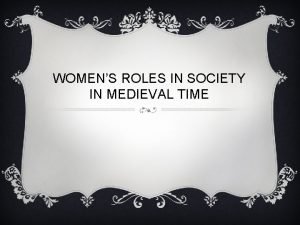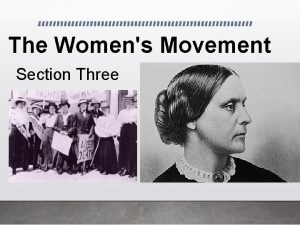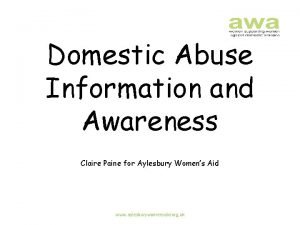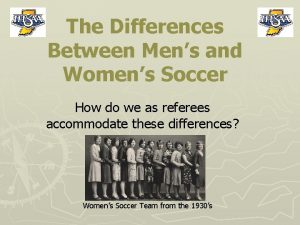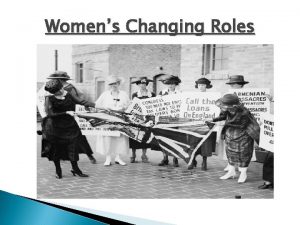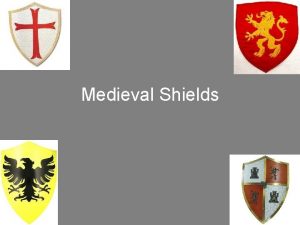WOMENS ROLES IN SOCIETY IN MEDIEVAL TIME WOMENS











- Slides: 11

WOMEN’S ROLES IN SOCIETY IN MEDIEVAL TIME

WOMEN'S ROLES v. We can put the women into five categories based on know they were known during medieval society. v. Women from the class that was landed and free. (Lady of Manor) v. Religious Women. (Nun) v. Townswomen. (Middle class) v. Women of lower Estate. (Lower Class) v. Peasants

Lady of the Manor: • Often ran manors, farms, and castles. • Influential person. • The authority when husband wasn’t present.

Religious Women: • The convent was another alternative for upper class women instead of marriage. • Praying, study, and work. • Worked 5 to 6 hours.

Townswomen: • Middle class women expected to. . • Maintain house hold. • Assist their husband in business. For Example. . • Help her husband in his trade.

Women of lower Estate: • Townswomen whose occupations needed little or no training skill. • Lower middle class perhaps urban poor. • Many were immigrants from countryside. • Street-vendors.

Peasant Women: • Expected to share in all their husband’s labor on the farm. • Traditional household chores. • Many didn’t marry due to a shortage of eligible partners.

TREATMENT v. Upper Class: well respected. v. Religious women: important role, treated with kindness but well disciplined. v. Middle class: had authority in business; equally or even superior to men. v. Lower Class: Poor pay v. Peasants: Slaves.

AUTHORITY v. Social Status. v. Land/Property. v. The richer you are the more authority you have. v. Lower class had no authority what so ever.

v. The Wife Of Bath: Townswomen/Middleclass from Chaucer’s Canterbury Tales. v. She belongs to the third group of women workers. EXAMPLES/RFERENCES FROM CLASS!!

WORKS CITED v. Fox, Sally. The Medieval Woman: An Illuminated Book of Days. Boston: Little, Brown and Company, 1985. v. Gies, Frances and Joseph. Women in the Middle Ages. Barnes and Noble, 1978. v. Robertson, D. W. , Jr. " 'And for My Land Thus Hastow Mordred Me? ' Land Tenure, the Cloth Industry, and the Wife of Bath. " Chaucer Review 13 (1979 -80): 403 -20. v. Stuart, Susan Mosher. Women in Medieval Society. University of Pennsylvania Press, 1976.
